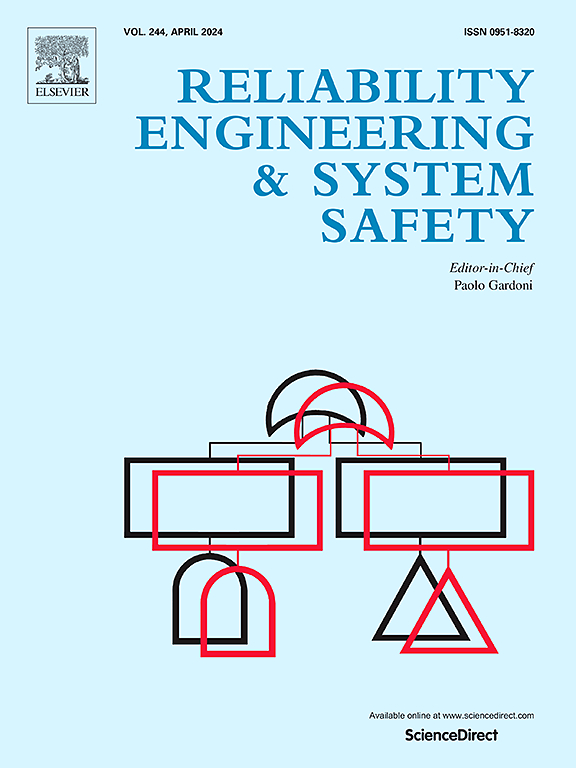Wind hazard reliability assessment of a transmission tower-line system incorporating progressive collapse
IF 9.4
1区 工程技术
Q1 ENGINEERING, INDUSTRIAL
引用次数: 0
Abstract
Wind-induced progressive collapse is the primary factor triggering large-scale failure of transmission tower line systems (TTLS), which seriously affects the reliable operation of the power system. The core innovation of this paper is incorporating the progressive collapse into the wind hazard reliability assessment of TTLS. First, a semi-analytical solution (SAS) is derived to quantify the nonlinear tensions in a multi-span conductor-insulator system, taking into account the high nonlinearity of insulators. During this process, a multi-dimensional nonlinear system of equations is constructed, with conductor reaction forces and insulator swinging displacements as variables. Subsequently, an efficient SAS-based progressive collapse analysis method is developed by simplifying the failed tower as a multi-segment rigid body model and coupling the two-dimensional overturning angles into the SAS, where the impact of the post-failure equilibrium on progressive collapse is highlighted. Afterwards, uncertain TTLS models are established, and the progressive collapse fragility is estimated using Monte Carlo simulation and SAS. A comprehensive sensitivity analysis is performed to rank the importance of uncertainty parameters affecting the model outcomes. Finally, both the yearly failure probability and reliability index before and after considering the progressive collapse are calculated. Numerical validation demonstrates the excellent reliability of the proposed method; neglecting progressive collapse leads to an overestimation of the reliability index.
求助全文
约1分钟内获得全文
求助全文
来源期刊

Reliability Engineering & System Safety
管理科学-工程:工业
CiteScore
15.20
自引率
39.50%
发文量
621
审稿时长
67 days
期刊介绍:
Elsevier publishes Reliability Engineering & System Safety in association with the European Safety and Reliability Association and the Safety Engineering and Risk Analysis Division. The international journal is devoted to developing and applying methods to enhance the safety and reliability of complex technological systems, like nuclear power plants, chemical plants, hazardous waste facilities, space systems, offshore and maritime systems, transportation systems, constructed infrastructure, and manufacturing plants. The journal normally publishes only articles that involve the analysis of substantive problems related to the reliability of complex systems or present techniques and/or theoretical results that have a discernable relationship to the solution of such problems. An important aim is to balance academic material and practical applications.
 求助内容:
求助内容: 应助结果提醒方式:
应助结果提醒方式:


